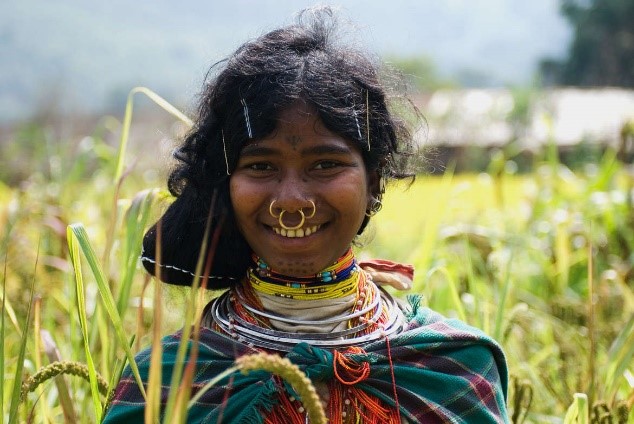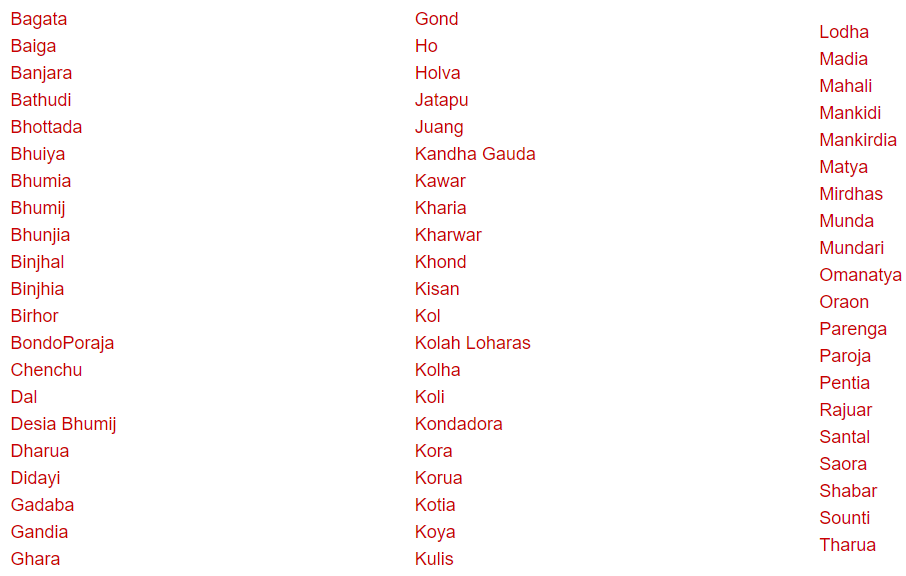Description

Disclaimer: Copyright infringement not intended.
Context
- Since 2019, members of the Kondh tribe in Odisha’s Nayagarh district have added one more event to their calendar of festivals and celebrations called- Bihan Mela.
Bihan Mela
About
- Bihan Mela is a seed festival. It is participated by the farmers.
- The fair mimics a traditional market where farmers used to exchange seeds.
Genesis
- Farmers in the Kondh Villages of Odisha are mostly marginal and depend on the monsoon rains.
- In recent years, they have seen repeated crop failures either due to erratic rainfall or pest attacks.
- Since the Green Revolution, farmers in the region have abandoned native crops and varieties that are naturally resistant to pests and better suited to the region’s climate.
- Even in dongarsor hilltops, where families used to practice mixed cropping until recently, have shifted to monoculture cash crops like cashew. This has not only affected their food and nutritional security but also degraded the soil and made the farmers more vulnerable to crop loss.
- The seed festival was thus introduced to help farmers return to their traditional ways of farming like mixed cropping.
Commencement of the Festival
- Preparations begin as soon as farmers have harvested kharif crops, which includes both hybrid and indigenous varieties of paddy, millets, maize, and sorghum.
Elements of the Festival
- Women, who are at the helm of this festival, carefully collect seeds of the indigenous varieties and store them in earthen pots.
- Then, on a designated day in December, they decorate the pots with red and white motifs, place them in a bamboo basket and carry it on their head to the village where the fair is being organized.
- Along the way, they are accompanied by men beating drums and other traditional instruments.

Other steps taken in the region
- To facilitate access to indigenous seeds, a seed bank was also set up in Raisar village.
- The bank works on a simple premise: collect and preserve indigenous seeds from across Kondh villages and lend those out to farmers.
- The bank, which was set up with just 12 varieties of paddy, now has 62 varieties of paddy, four varieties of millets, five varieties of pulses and eight vegetables.
- The bank is open to all Kondh farmers and has benefitted 750 families so far.
- After seeing the demand, three more seed banks will be opened in the region.
Kondh Tribe: Fast Facts
About
- The Khonds are the largest tribal group in the state of Odisha.
Well- Known
- They are known for their rich cultural heritage, valourous martial traditions, and indigenous values which center on harmony with nature.

Population
- The 2001 Census of India records just over 1.4 million Konds in Orissa.
- Currently this figure is closer to 5 million of the nearly 1.8 million Konds in the country.
Concentration
- The Kond population is concentrated in the southern hills of the state and the Mahanadi River basin, and some are also found in the Srikakulam, Vizianagaram, and Visakhapatnam districts of the neighboring Andhra Pradesh State.
Recognition
- The Kandhamal district in Odisha has a fifty-five percent Khond population, and is named after the tribe.
ST Status
- They are a designated Scheduled Tribe in the states of Andhra Pradesh, Bihar, Chhattisgarh, Madhya Pradesh, Maharashtra, Odisha, Jharkhand and West Bengal.
Language
- The Khonds speak the Kui language as their native language. They also speak its southern dialect, Kuvi.
- The language has no script of its own, with the Oriya script used for writing Kui, and the Telugu script used for Kuvi.
- Kui is a Dravidian language and is written with the Odia alphabet.

Family
- The Khond commonly practice clan exogamy. The family is patrilineal and patrilocal.
Economy
- They have an economy based on hunting and gathering, trapping game, collecting wild fruits, tubers and honey apart from subsistence agriculture i.e. shifting cultivation or slash-and-burn cultivation, locally called Podu.
Religious Beliefs
- Traditionally the Khond religious beliefs were syncretic combining totemism, animism, ancestor worship, shamanism and nature worship.
Trivia
- Of the 645 Scheduled Tribes enlisted in India, Odisha hosts the largest number – 62 indigenous tribal communities reside in the state. 62 Scheduled Tribes in Odisha speak as many as 74 dialects.

- As per the Census 2011, the state of Odisha has the third highest percentage of tribal population in the country.
- They constitute 85% of the total population of the state and contribute 9.17% to the total tribal population of the country.
- Of the 62 tribal groups residing in Odisha, 13 are recognized as Particularly Vulnerable Tribal Groups (PVTGs).
- The PVTGs in the state are Bonda, Birhor, Chuktia Bhunjia, Didayi, Dongaria Kandha, Hill Kharia, Juang, Kutia Kondh, Lanjia Saora, Lodha, Mankirdia, Paudi Bhuyan and Saora.
Read about PVTGs: https://www.iasgyan.in/daily-current-affairs/pvtgs
|
PRACTICE QUESTION
Q. Which of the following statements are correct?
a) Of the 645 Scheduled Tribes enlisted in India, Odisha hosts the largest number – 62 indigenous tribal communities reside in the state.
b) The Khonds are the largest tribal group in the state of Odisha.
c) The Kandhamal district in Odisha has a fifty-five percent Khond population, and is named after the tribe.
d) Odisha has the highest number of PVTGs in India.
1. a and b only
2. b and c only
3. c and d only
4. All of the above statements are correct.
Correct Answer: Option 4
|

https://www.downtoearth.org.in/news/agriculture/bihan-mela-a-seed-festival-aims-to-help-tribal-kondh-farmers-in-odisha-return-to-their-agricultural-traditions-88643















